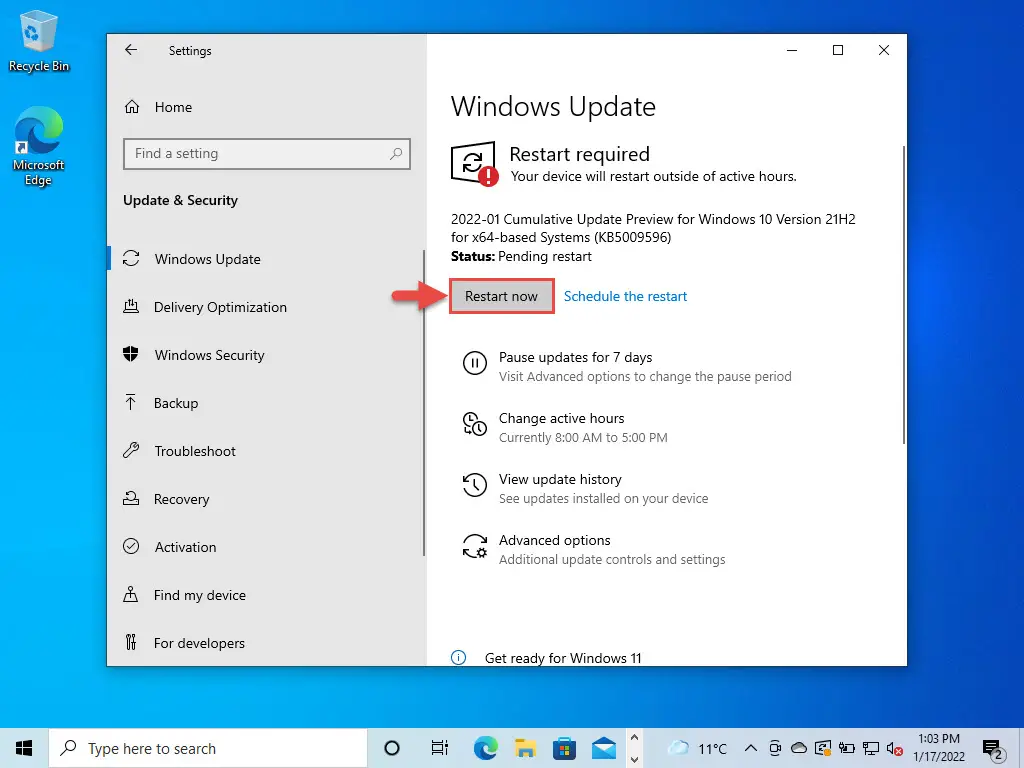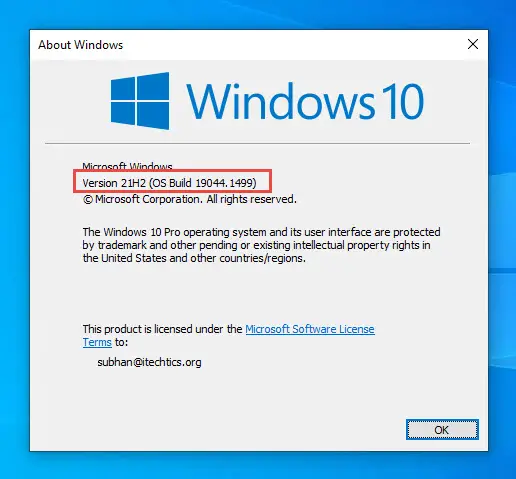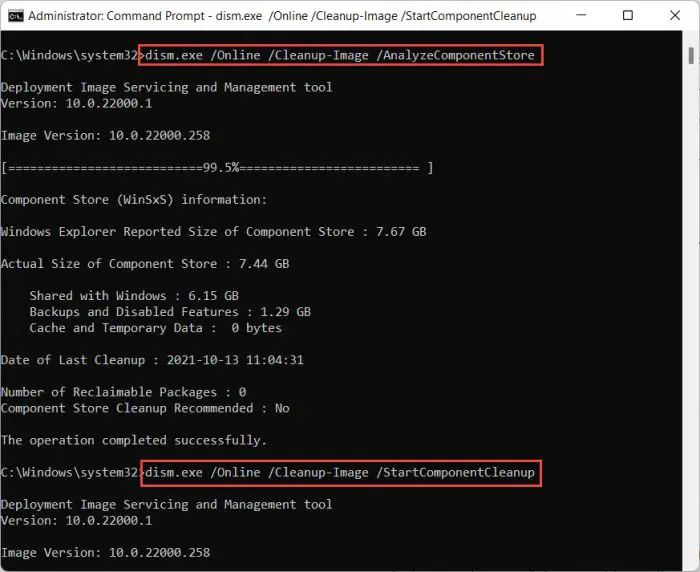Microsoft has released KB5009596 for Windows 10 21H2 on the Release Preview channel. This is a non-security update and brings a plethora of fixes for the operating system. Installing this update will upgrade your operating system’s build to 19044.1499.
Microsoft has not identified any known issues with this update yet. This is likely because the update is still in its testing phase and Microsoft is waiting for the user’s feedback to report any problems.
You can upgrade your OS using the given guide down below. However, we strongly recommend that you do not subscribe to the Insider program in a production environment as these releases can be unstable.
Table of Contents
What’s New in KB5009596
Microsoft has made the following improvements to the OS with this update:
- An issue in Microsoft UI Automation that may occastionally cause Microsoft Outlook to stop working has been fixed.
- The daylight saving time to start in February 2022 instead of March 2022 in Jordan has been updated.
- An issue that prevents the Windows Subsystem for Linux 2 (WSL2) localhost relay from starting when you enable Fast Startup has been fixed.
- Parameters that pass to wmic.exe in telemetry to capture additional usage data to address application compatibility concerns have been added.
- An issue in CLSID_InternetExplorer has been addressed.
- A reminder to Internet Explorer 11 that notifies users of its upcoming retirement has been added.
- An issue that might sometimes cause Japanese Microsoft Office applications stop working when you use the new Japanese Input Method Editor (IME) has been taken care of.
- An issue that causes applications to stop working when you type text using the Chinese IME has been addressed.
- An issue that might cause Windows to stop working when you use the Pen Haptics API has been fixed.
- The phone number for Windows Activation for locales that have the wrong phone number has been updated.
- An issue that causes a device to incorrectly report itself as noncompliant with Conditional Access because of an antivirus or firewall configuration has been fixed.
- An issue that stops printing or prints the wrong output when you print using USB on Windows 10 v2004 or later, has been addressed.
- An issue that affects the Remote Desktop screen, in some cases, when you use Advanced Video Coding (AVC) software encoding has been fixed.
- An issue that prevents certain surround sound audio from playing in Microsoft Edge has been fixed.
- A deadlock in vpnike.dll and rasmans.dll has been fixed.
- An issue that affects the Fast Identity Online 2.0 (FIDO2) credential provider and prevents the display of the PIN entry box has been addressed.
- An issue that causes Windows to stop working and generates the error, “IRQL_NOT_LESS_OR_EQUAL” has been fixed.
- An issue that might cause the Get-TPM PowerShell command to fail (error code 0x80090011) when it attempts to report Trusted Platform Module (TPM) information has been fixed.
- An issue that causes the AltGr key to stop working if a remote desktop client is running or if RemoteApp was disconnected has been taken care of.
- A new feature has been added that provides direct access to select your Microsoft Edge profiles from News & interests. You can also go to Microsoft Edge directly from News & interests in the same corresponding profile.
- A new feature called “Sync Your Settings” has been added for users who are migrating to Windows 11. This setting will be used to automatically back up a list of your applications to your Microsoft Account, which you can quickly restore to your Windows 11. However, Microsoft states that this feature will be rolled out gradually, thus you may not see as soon as you upgrade.
- An issue that causes functioning Bluetooth devices to stop working when you attempt to connect to a non-functioning Bluetooth device has been fixed.
- An issue that causes lsass.exe to stop working and the restarts the device has been mitigated.
- An issue that fails to apply the Group Policy Object (GPO) “Do not allow compression on all NTFS Volume” has been addressed.
- An issue that prevents Robocopy from retrying the file copy process has been fixed.
- An issue that might occur when you enable verbose Active Directory Federation Services (AD FS) audit logging and an invalid parameter is logged has been fixed.
- A memory leak has been addressed which occurs when you call WinVerifyTrust().
How to Install Windows 10 Build 19044.1499
To install KB5009596, you already need to be running Windows 10 version 21H2 and subscribed to the Release Preview channel. Once done, follow the given steps to install this update.
- Open to the Settings app and then click Windows Update.
- From the right side, click Check for updates.
- The app will then scan for pending updates. When scanned, you will see “
2022-01 Cumulative Update Preview for Windows 10 Version 21H2 for x64-based Systems” being downloaded and installed automatically. When it does, click Restart now to finalize the installation.
Once the computer reboots, you can check that it has been updated to build 19044.1499 by typing in winver in Run.

Rollback/Uninstall Windows 10 Insider Preview Update
If you do not wish to keep the installed preview update for some reason, you can always roll back to the previous build of the OS. However, this can only be performed within the next 10 days after installing the new update.
To roll back after 10 days, you will need to apply this trick.
You can also resort to uninstalling the update using the method below.
Uninstall KB5009596 Using Command Prompt
Since we have installed this update using Windows Update, it will not be listed in the list of updates but you can see it in the command line, and thus uninstall it. Here is how:
- Open Command Prompt with administrative privileges.
- Run the following command:
wmic qfe list brief /format:table - This will show all the updates installed on the computer. Make sure the relevant updates are on the list. Now run the following command to uninstall it:
wusa /uninstall /kb:5009596
Restart your computer once the update is removed.
Cleanup After Installing Windows Updates
If you want to save space after installing Windows updates, you can run the following commands:
dism.exe /Online /Cleanup-Image /AnalyzeComponentStore
dism.exe /Online /Cleanup-Image /StartComponentCleanup


